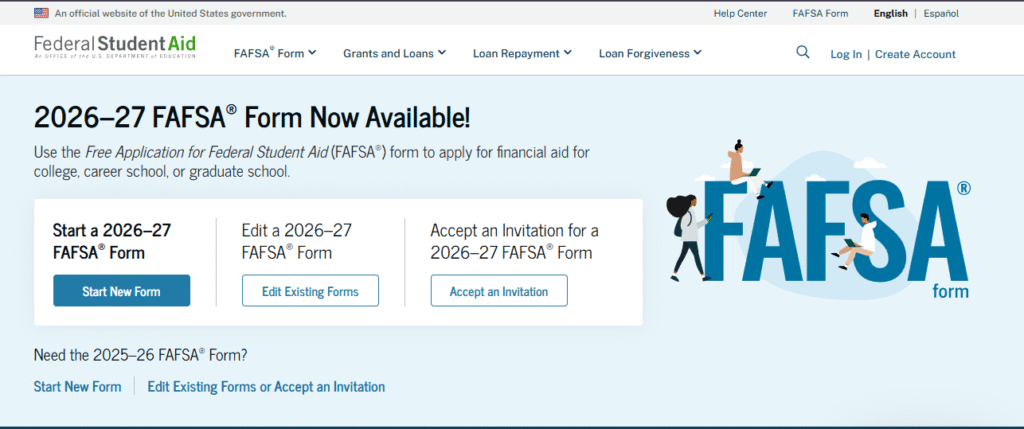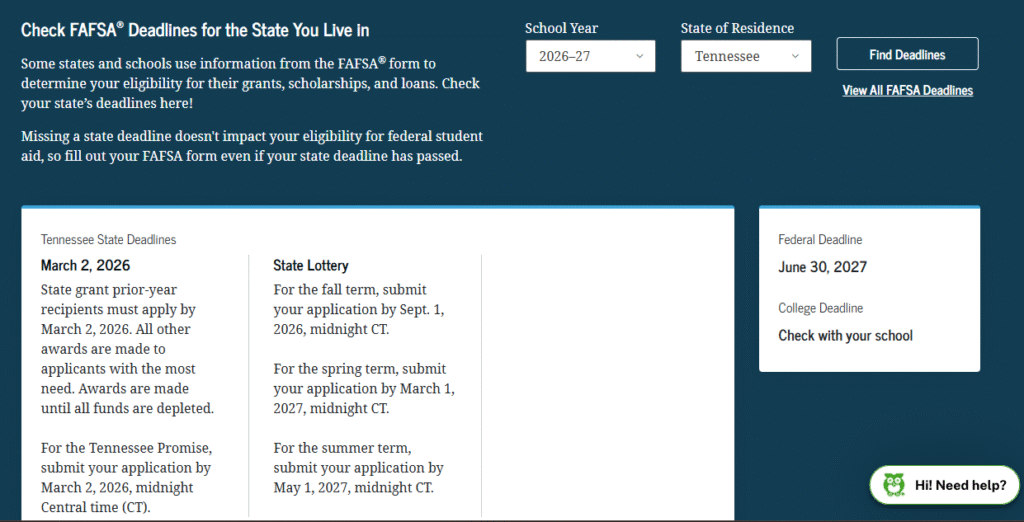If you are or have a student looking to attend school during the 2026 - 2027 school year then it's time for them to fill out their FAFSA form on https://studentaid.gov/h/apply-for-aid/fafsa. FAFSA stands for Free Application for Federal Student Aid. This form is what determines if you get federal student aid, federal student loans, Tennessee Promise, Tennessee Hope, TSAC, and so much more. If you are going to trade school, two-year college, or four-year college you must fill out the FAFSA for each year.

First the student goes and creates an account on https://studentaid.gov/ and they start the FAFSA. They then have to put their parent's email address in and their parent needs to go create an account and log in and agree that the government can pull their taxes. Once the parent and the student have completed their forms, the student will get the confirmation emails.
After it has been processed the student will get the "SAI" number. SAI stands for Student Aid Index, a number that colleges use to determine your eligibility for federal and institutional financial aid. (Free Application for Federal Student Aid), a lower SAI indicates higher financial need and thus potentially more aid, while a negative SAI or zero generally qualifies you for the maximum Pell Grant.
I'll explain more about SAI below, but first I wanted to mention the Tennessee Deadlines and why it matters to apply early.
State grant prior-year recipients must apply by March 2, 2026. All other awards are made to applicants with the most need. Awards are made until all funds are depleted. <--- That is why you want to apply as soon as you can.
For the Tennessee Promise, submit your application by March 2, 2026, midnight Central time (CT).

Let's talk about the SAI. The Student Aid Index (SAI) is a formula-based index number ranging from -1500 to 999,999. Where your SAI falls within the SAI range helps your school determine how much financial support you may need.
A SAI of 0 or below generally means you're eligible for the maximum Pell Grant award, assuming you meet other eligibility requirements. A negative SAI indicates you have a higher financial need. For example, if you have an SAI of -1500, you’ll qualify for a maximum Pell Grant award, assuming you have not exhausted your lifetime amounts and meet all student eligibility requirements. Learn how the SAI is calculated.
Your SAI is not
- a dollar amount of aid you’ll receive,
- what your family is expected to provide, or
- your final financial aid offer.
Once you have completed the form (both student and parent), the student will need to follow these steps to find their SAI. (The parent will not have it on their view, only the student).
- Log in to StudentAid.gov using your account username and password.
- Select your processed FAFSA submission.
- Select “View FAFSA Submission Summary.”
- Select the “Eligibility Overview” tab.
There's loads of places to look around for help in how to fill it out, but it's just important that you do it each year. They say that some places award aid in order in which it was received, so if you are hopeful to quality for any extra help get to it sooner than later.

